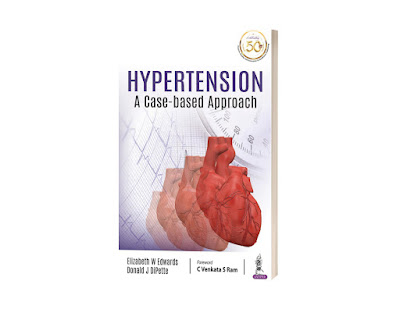Hypertension has been described as the silent killer since it is without symptoms for much of its natural history. However, the long-term target organ damage associated with elevated blood pressure is definitely not silent. In the past, some authorities have viewed elevated blood pressure as a compensatory mechanism to preserve blood flow to vital organs in response to peripheral vascular diseases. However, this previous dogma has now changed dramatically: high blood pressure is a major risk factor for cardiac disease (including myocardial infarction, left ventricular hypertrophy, arrhythmias, and congestive heart failure), cerebrovascular disease (including ischemia, stroke, and dementia), renal disease (chronic and end stage renal failure), and death. Furthermore, the global population’s awareness, treatment, and control rates of hypertension are dismally low, which contributes to the increasing global non-communicable disease burden. Thus, it is imperative that the healthcare, governmental, and public sectors be knowledgeable regarding hypertension and its consequences and disseminate information at local, regional, and national levels.
It is our hope that trainees health professionals regarding the pathophysiology of the disease will raise public awareness for hypertension detection, prevention, and control. This book employs a clinical case-based format to teach concepts and cement learning. Each chapter begins with an introduction and a case scenario including background, previous attempts at controlling high blood pressure, and challenges and obstacles, if any. The authors discuss treatments and interventions, as well as outcomes, and highlight clinical pearls and pitfalls. The intent of the book builds on the general evolution of education and learning styles and allows readers an opportunity to analyze data and apply concepts to authentic clinical scenarios and thus the treatment of the individual patient. The book is divided into three sections. Section 1, consisting of eight chapters, covers general concepts associated with the hypertensive process. Readers will learn about current guidelines of hypertension management including the initial and subsequent pharmacologic treatments of an elevated blood pressure. We are pleased to have been able to include the recently released hypertension guidelines from the American Heart Association (AHA) and the American College of Cardiology (ACC). Target organ damage from hypertension is an important topic in this section since it contributes directly to the morbidity and mortality of hypertension. Pharmacologic and non-pharmacologic managements of high blood pressure, as well as population differences, are discussed. In addition, salt-sensitivity and saltresistance, an important general concept with direct clinical applications to the hypertensive individual, is detailed. Section
1 includes a chapter describing a unique approach to hypertension management: that of redesigning an interdisciplinary primary care clinic to optimize blood pressure control. The section concludes with an assessment of the evidencebased medicine for clinical management of hypertension. Section 2 examines hypertension in nine special populations: patients with cardiovascular disease, stroke, chronic kidney disease, renovascular disease, diabetes, and sleep apnea; pregnant individuals; patients with white-coat hypertension; and children and adolescents. Finally, Section 3 describes the approach to hypertension when initial measures fail. This section includes a discussion of resistant hypertension, evaluation of secondary causes of hypertension, and hypertensive urgency and emergency. We believe that the contributions of this textbook, authored by international and respected experts, will help students and practicing healthcare professionals better understand the vast field of hypertension and its complexities. The result of this enhanced understanding should improve the treatment and control of hypertension and its morbidity and mortality.
INTRODUCTION
Hypertension (HTN) is a leading cardiovascular (CV) risk factor; both nonpharmacologic and pharmacologic modalities can successfully control blood pressure to recommended goals. Most recent guidelines have focused on pharmacologic management over nonpharmacologic management, as will this chapter. However, this chapter will complement other chapters in the book that specifically address in detail the nonpharmacologic management of HTN. Importantly, even within the past several years, evidence-based medicine in the form of new clinical trials has become available which may have significant clinical implications on existing guidelines. In this chapter, the case of a hypertensive individual will be presented as well as current national and international guidelines on the management and treatment of hypertension. Their recommended blood pressure treatment thresholds, goals, and implications in the management of the patient case presented will be discussed. Finally, recently published clinical data and studies will be described, which may impact the current approach to HTN.
CASE PRESENTATION
A 76-year-old man is referred by his primary care physician to the HTN clinic for a second opinion on his elevated blood pressure. He has heard a lower blood pressure may lengthen his life and reduce his chances of having a heart attack or stroke. In addition to HTN, he also has diabetes mellitus, depression, osteoarthritis, and hyperlipidemia. His mother died of a massive stroke at age 80; his father died of “heart disease” at age 41. He used to smoke several packs of cigarettes a week but quit when he met his wife six years ago. He currently is prescribed hydrochlorothiazide (HCTZ) 25 mg daily, lisinopril 40 mg daily, metformin 1 g twice daily, sitagliptin 100 mg daily, sertraline 50 mg daily, and atorvastatin 40 mg at bedtime. He has missed several physician appointments and has not always taken his medications diligently. He has no known drug allergies
His review of systems is unremarkable with the exception of occasional knee pain and headaches for which he typically takes intermittent nonsteroidal anti-inflammatory drugs (NSAIDs) and some worsening of near vision which he attributes to advancing age.

